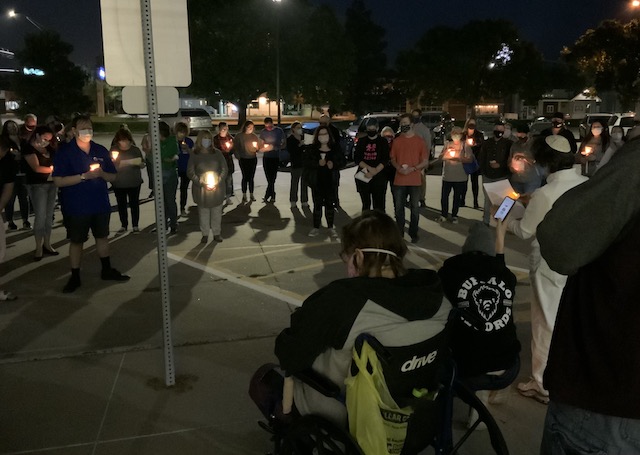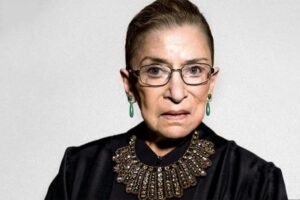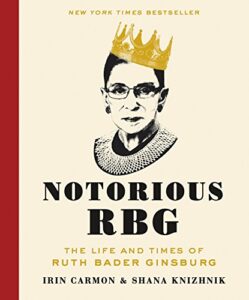
People in Kearney, Nebraska, gathered Saturday night for a candlelight vigil to remember Justice Ruth Bader Ginsburg.
It was with great sadness, though not much surprise, that I learned about the death of United States Supreme Court associate justice Ruth Bader Ginsburg on Friday evening. On Saturday morning, a group I belong to started putting together plans for a vigil remembering and honoring Justice Ginsburg. My part was to prepare and read an obituary for her. Much of my information for it was drawn from her obit in The Washington Post.
Good evening.
Thank you all for coming to help remember Associate Justice Ruth Bader Ginsburg.
Joan Ruth Bader wars born in Brooklyn, New York, on March 15,1933 in the midst of the Great Depression. Joan was a popular name in the 1930s, and her mother suggested that she go by Ruth in kindergarten to avoid confusion with the other Joans in her class. Her father was a Russian Jewish immigrant and her mother was from the US.
Her mother graduated from high school at age 15 but never had the chance to go to college, but she saved enough from her household budget to create a college fund for Ruth. Her mother died of cancer the day before Ruth graduated near the top of her class in high school. Ruth didn’t end up needing the money her mother had saved – she had a full-ride scholarship to Cornell based on her academic ability. It was there she would meet the love of her life, Martin Ginsburg.
Ruth learned early about how things were different for women than for men. When Marty was drafted into the Army, she applied for and nearly got a good job in the local Social Security office. But when her potential employer learned she was pregnant, she was offered a job of a typist instead.
After Marty was out of the army in 1956, both of them attended Harvard Law School. Ruth was one of 9 women in a class of 500.
She was a top student who also helped her husband through his time in law school as he was suffering from testicular cancer.
Ruth earned a spot on the Harvard Law Review, and after transferring to Columbia Law School in NYC to follow her husband to his first job, she had a spot on the law review there as well. Ruth ended up tied for first place in her class in 1959, but none of the top law firms would consider her for a job. “I struck out on three grounds – I was Jewish, a woman and a mother.”
She also couldn’t get an interview to be a clerk for Supreme court Justice Felix Frankfurter, who was not ready to consider a woman as a clerk.
After clerking at lower levels, she landed a job on the faculty at Rutgers law school where she learned she was being paid less than her male colleagues. This led to a successful equal pay campaign for the women teachers there. She also battled in court successfully for maternity leave rights for teachers in New Jersey.
She went on to be the first woman hired with tenure at Columbia Law School. At the same time, she was leading a team of lawyers for the ACLU. This team took six cases to the Supreme Court and won five of them, establishing that the equal protection clause in the constitution applied on the basis of sex as well as racial minorities.
President Jimmy Carter was impressed with her work and appointed her to the U.S. Court of Appeals for the D.C. Circuit in 1980. It was while she was on the court of appeals she developed her famous friendship with conservative judge Antonin Scalia, with both of them having keen legal minds and a love of opera.
In 1993, when Justice Byron White resigned from the bench, President Bill Clinton was considering Ginsburg for the high court. Oddly enough, given her modern day reputation as the head of the liberal wing of the court, a number of abortion rights advocates questioned her as a nominee for being too moderate.
But her perceived moderation also won her support from conservatives in the senate who viewed her as someone they could support. Following an interview with Clinton where she reportedly impressed with her sharp constitutional analysis, she was officially nominated.
In what is hard to imagine today, she approved by the senate by a 96-3 vote.
Perhaps her most famous decision was in 1996, writing the groundbreaking decision ordering Virginia Military Institute to admit women since it was a state-funded institution. She wrote that while Virginia “serves the state’s sons, it makes no provision whatever for her daughters. That is not equal protection”

Justice Ginsburg wearing her famous dissent collar. It became so iconic, it is the basis for necklaces and earrings.
Given that she was one of the more progressive justices on a conservative court, she was often put in the role of the person writing the dissent. (She was also known for the distinctive collar she wore on her robe for dissent cases that came to be known as the dissent collar.)
Famously, she wrote the dissent for the case of Bush v. Gore that settled the vote counting in the 2000 election. But she had important cases where she was in the majority as well, most notably approving same sex marriage and protecting abortion rights. She was also the first justice to perform a same-sex marriage ceremony.
Justice Ginsburg could be brutal in her dissents, criticizing the Citizen’s United case on campaign finance and Shelby County v. Holder that invalidated significant parts of the voting rights act. She wrote:
“Throwing out pre-clearance when it has worked and is continuing to work to stop discriminatory changes is like throwing away your umbrella in a rainstorm because you are not getting wet,”
 In the last decade or so, the diminutive justice became famous for her workouts with a private trainer, her incredible work habits, and reputation with her young fans as the Notorious RBG.
In the last decade or so, the diminutive justice became famous for her workouts with a private trainer, her incredible work habits, and reputation with her young fans as the Notorious RBG.
She also suffered from repeated illnesses and bouts of cancer.
Cancer claimed the life of her dear husband Marty on June 27, 2010. Ginsburg was in court the next day with an opinion to deliver.
Ginsburg died Sept. 18th at her home at age 87.
Ginsburg will always be remembered for her work on sexual equality under the law, both as a lawyer and as a justice. She said her view of quality was simple:
“It has always been that girls should have the same opportunity to dream, to aspire and achieve — to do whatever their God-given talents enable them to do — as boys,” “There should be no place where there isn’t a welcome mat for women. . . . That’s what it’s all about: Women and men, working together, should help make the society a better place than it is now.”
